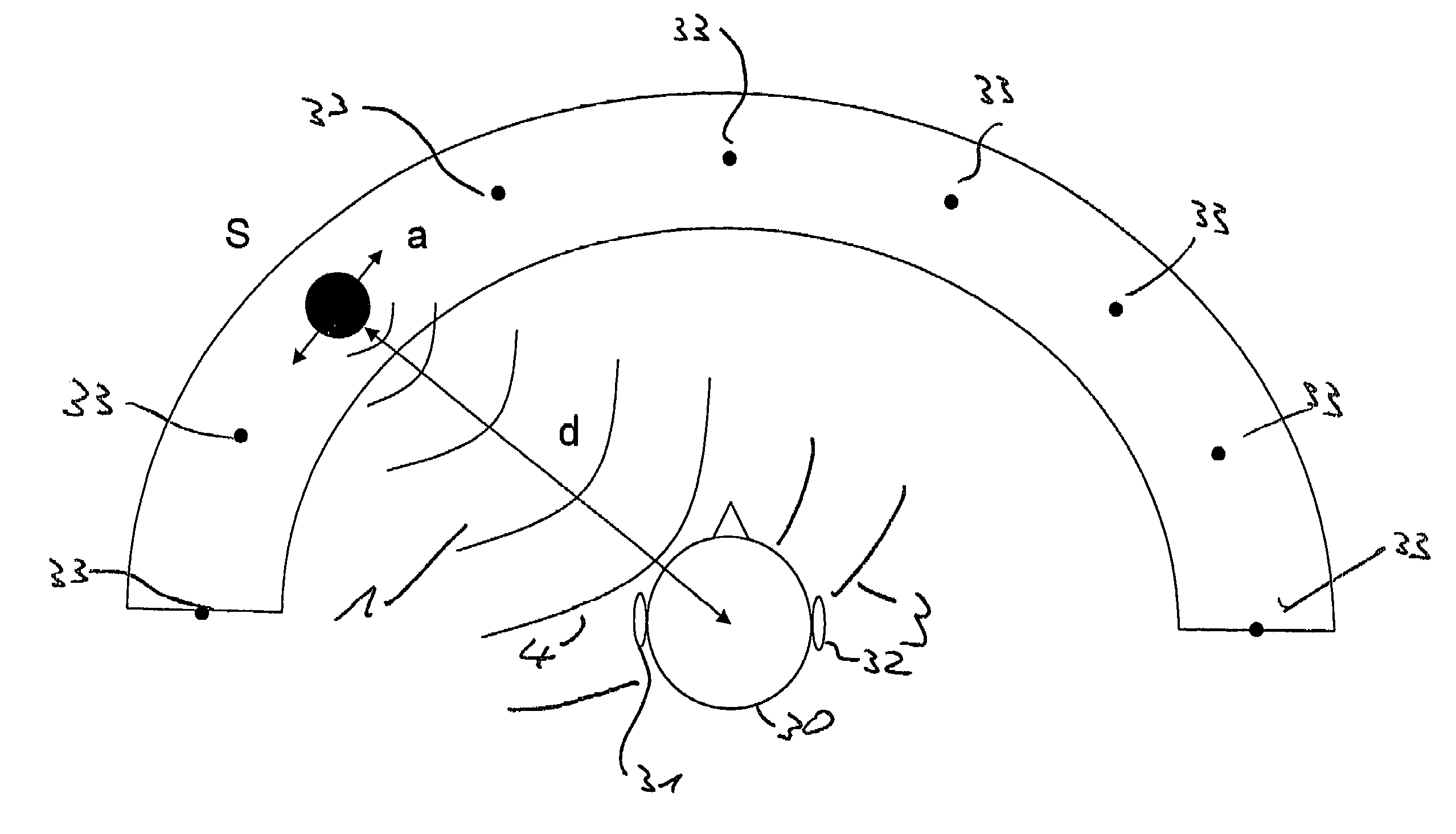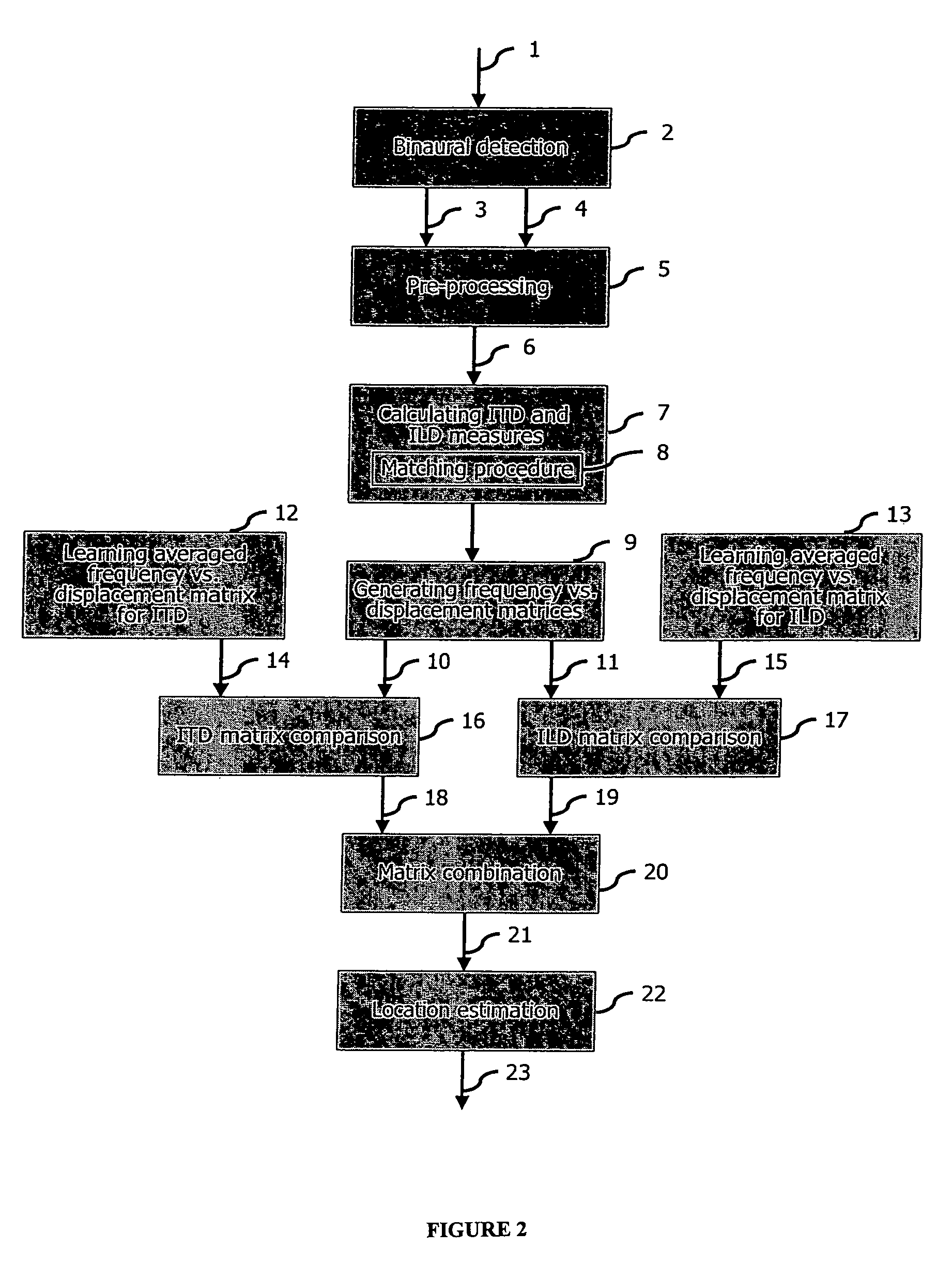Sound source localization based on binaural signals
a binaural signal and localization technology, applied in the direction of speech analysis, direction finders using ultrasonic/sonic/infrasonic waves, loudspeaker spatial/constructional arrangement, etc., can solve the problems of significant differences at the signal level between ears, incident sound waves are usually diffracted and damped, etc., to achieve the effect of improving the classification results
- Summary
- Abstract
- Description
- Claims
- Application Information
AI Technical Summary
Benefits of technology
Problems solved by technology
Method used
Image
Examples
Embodiment Construction
[0024]One embodiment of the present invention provides techniques for calculating sound source location for binaural signals by using two sound receptors displaced against each other. According to one embodiment of the present invention, two sound receptors are displaced against each other in the azimuthal plane. A further embodiment of the present invention provides for extraction, representation and combination of two types of signals: ITD and ILD / IID.
[0025]Sound source localization according to one embodiment of the present invention is now explained with reference to FIG. 1 and FIG. 2.
[0026]A method according to one embodiment of the present invention provides for localization of the origin S of a binaural signal 1 on the basis of two sound signal components 3, 4 detected by a binaural detector 30, i.e. a detector having at least two separated acoustic sensors 31, 32. According to one embodiment of the present invention, the binaural signal 1 is thereby detected 2 by the two sen...
PUM
 Login to View More
Login to View More Abstract
Description
Claims
Application Information
 Login to View More
Login to View More - R&D
- Intellectual Property
- Life Sciences
- Materials
- Tech Scout
- Unparalleled Data Quality
- Higher Quality Content
- 60% Fewer Hallucinations
Browse by: Latest US Patents, China's latest patents, Technical Efficacy Thesaurus, Application Domain, Technology Topic, Popular Technical Reports.
© 2025 PatSnap. All rights reserved.Legal|Privacy policy|Modern Slavery Act Transparency Statement|Sitemap|About US| Contact US: help@patsnap.com



